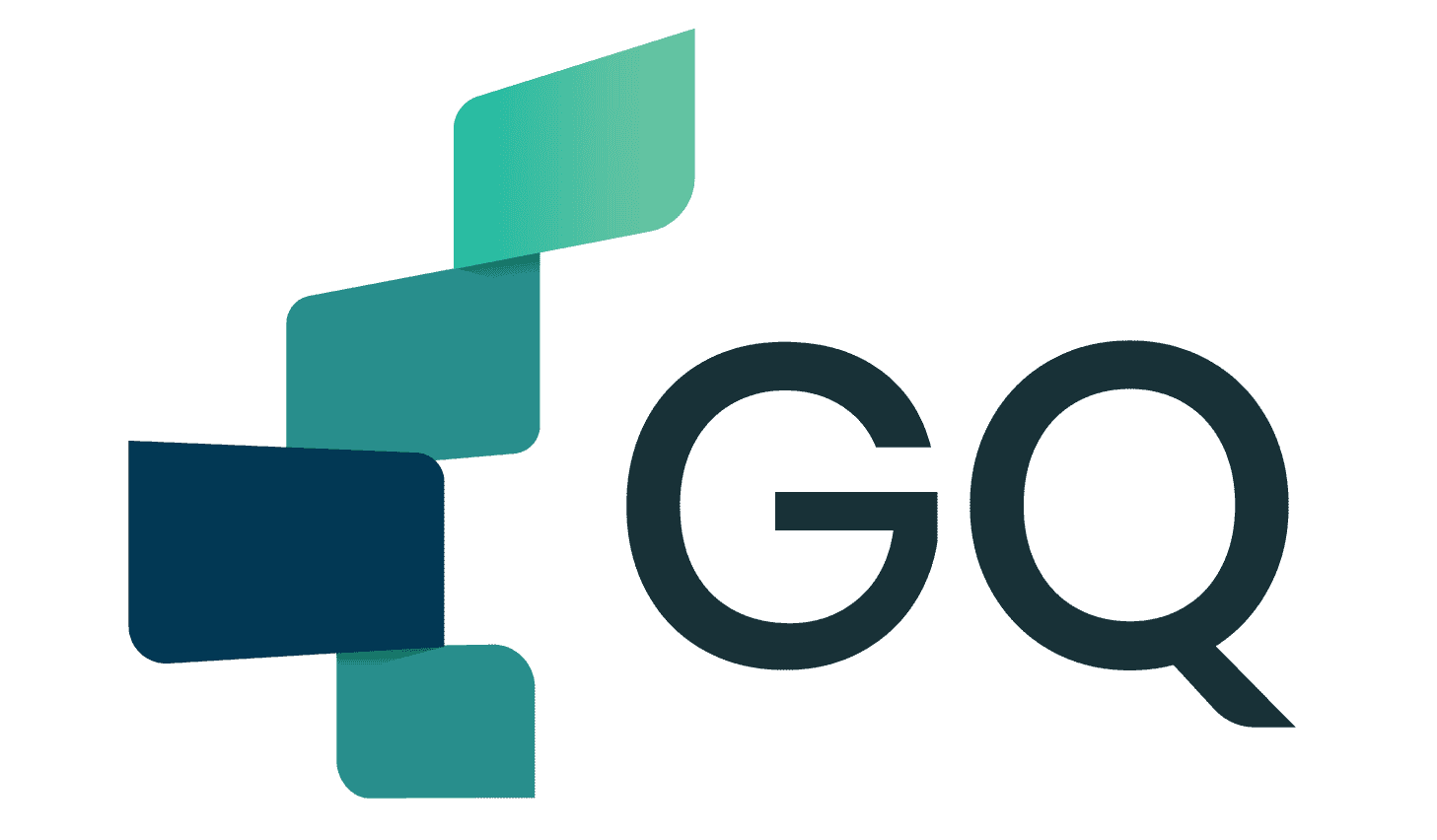
- Benefits of IT Sourcing Over Traditional Procurement
- Aligning with Business and IT Objectives
- Steps in Creating an Effective Strategy
- Strategies for Attracting Skilled Professionals
IT sourcing is a fundamental component of contemporary business operations, involving the procurement of IT products and services from external vendors to support and enhance an organization’s infrastructure and operations. Effective IT sourcing is instrumental in improving cost efficiency, bolstering operational performance, and solidifying a competitive edge in an increasingly dynamic market. By encompassing a wide variety of services such as software development, network management, IT consulting, and cloud services, IT sourcing enables organizations to achieve their IT and business goals more efficiently.
What Is IT Sourcing?
IT sourcing involves acquiring the necessary Information Technology resources to support an organization’s IT infrastructure and operations from third-party suppliers. This means obtaining hardware, software, cloud services, and managed services, which are crucial for maintaining efficient business operations.
Effective IT sourcing aims at cost reduction and efficiency improvement, thus reinforcing an organization’s competitive standing. Given the complexity of modern technology systems, these resources often cannot be managed only by in-house teams, necessitating third-party support.
The IT sourcing process also addresses challenges like integrating varied technological solutions, ensuring optimal performance, and adapting to the evolving tech landscape.
Distinctions Between IT Sourcing and Traditional Procurement
In understanding the differences between IT sourcing and traditional procurement, it is essential to note that IT sourcing is focused on creating long-term value rather than merely handling transactions.
- Traditional procurement emphasizes cost efficiency by obtaining goods and services at the best price and managing supplier relationships primarily for process efficiency.
- IT sourcing is inherently strategic, aiming to integrate technology effectively to support business objectives, driving innovation, and facilitating digital transformation initiatives. This strategic approach involves partnering with IT vendors to enhance capabilities aligned with the company’s overarching goals, thereby enabling a competitive edge.
While both IT sourcing and traditional procurement involve supplier selection and contract management, IT sourcing prioritizes the integration of innovative technologies and aligning IT development with business goals. This involves contracting IT products, services, and support from external vendors, differing significantly from traditional in-house IT service management.
Thus, IT sourcing goes beyond just fulfilling immediate operational needs, predicting market trends, and ensuring technology adoption to meet long-term strategic objectives.
Benefits of IT Sourcing Over Traditional Procurement
The benefits of IT sourcing over traditional procurement are grounded in its focus on long-term sustainability and strategic partnerships with IT vendors. Where traditional procurement prioritizes obtaining the best price for goods and services, IT sourcing emphasizes aligning technological capabilities with business objectives.
This alignment not only enables digital transformation but also offers a competitive advantage by ensuring that technological investments are strategically planned and executed. By outsourcing IT tasks traditionally managed in-house—such as software development and network management—enterprises can achieve significant cost savings and flexibility.
Moreover, IT sourcing allows businesses to tap into specialized skills and services from external experts, driving efficiency and innovation within the organization. This access to expertise ensures operations remain agile and responsive to rapid development cycles and hyper-competitive markets.
An effective IT sourcing strategy thus enables companies to adapt swiftly to changing market conditions, ensuring resilience and sustainability in their approach to technology management. This proactive stance in IT management allows businesses to respond effectively to disruptions and seize new opportunities for growth.
Insourcing
Insourcing represents an approach where organizations maintain their IT functions internally, allowing for closer integration and control over critical technological areas. This strategy is particularly beneficial for tasks that require high privacy levels or seamless inter-departmental collaboration. By keeping these functions in-house, businesses ensure that sensitive data and systems remain protected within their internal frameworks.
Additionally, insourcing can be a long-term solution for managing technology needs directly, facilitating more significant oversight and alignment with the company’s overall objectives. While it may involve injecting fresh expertise through external professionals, the focus remains on ensuring cohesion with internal infrastructures and operations, thereby addressing staffing challenges agilely.
Outsourcing
Outsourcing in IT is an established practice where organizations delegate certain IT functions or processes to external vendors. This approach offers several advantages, including cost-effectiveness and access to specialized skills and advanced technologies. Within outsourcing, variations such as offshoring, nearshoring, and onshoring provide different benefits based on geographical factors, including cost savings, cultural compatibility, and regulatory ease.
For outsourcing to be beneficial, businesses must effectively manage contracts to maintain value over time and meet expected outcomes. Implementing a governance framework ensures compliance and maximizes efficiency. An organization must establish a well-defined IT sourcing strategy aligned with its goals, enhancing vendor assessment, contractual negotiation, and risk management processes.
Cloud Computing
Cloud computing has transformed the IT sourcing landscape by providing scalable and flexible IT resources through models such as Infrastructure-as-a-Service (IaaS), Platform-as-a-Service (PaaS), and Software-as-a-Service (SaaS). This outsourcing model allows businesses to concentrate on their core activities by shifting infrastructure and software management responsibilities to cloud providers.
Organizations benefit significantly from the cost reduction associated with the elimination of large-scale IT infrastructure maintenance and upgrades. Additionally, the pay-as-you-go nature of cloud services offers financial efficiency, adapting effortlessly to fluctuating business demands and enhancing organizational agility. As a result, cloud computing has become a cornerstone for modern strategic IT sourcing, driving innovation and business growth.
Multisourcing
Multisourcing refers to the strategic procurement of IT resources from multiple vendors, which enhances flexibility and reduces dependency on a single supplier. This model offers a layered risk management approach by distributing service delivery across various providers, effectively diversifying potential points of failure. However, to ensure success, organizations must develop a strategic multisourcing plan that both aligns with long-term objectives and responds to dynamic technology requirements.
By leveraging diverse vendor capabilities, businesses can foster innovation, competitive advantage, and improved service quality. Moreover, competitive vendor agreements within a multisourcing model can lead to significant cost reductions while continually refining the service delivery mechanism to meet specific organizational needs.
Developing an IT Sourcing Strategy
Creating a robust IT sourcing strategy is essential for organizations aiming to optimize their IT capabilities while aligning them with their overarching business objectives. This process involves a thoughtful approach to resource allocation, vendor management, and risk mitigation to ensure that IT procurement decisions enhance organizational effectiveness.
An effective strategy should define roles and responsibilities clearly, enabling IT executives to systematically approach goal setting, vendor evaluation, and contract negotiation. Multi-vendor sourcing models offer flexibility and can deliver diverse benefits, although they require diligent management to mitigate associated risks.
Utilizing resources like articles, whitepapers, and case studies can provide valuable insights for developing a comprehensive IT sourcing strategy that meets long-term organizational needs.
Aligning with Business and IT Objectives
Aligning IT sourcing with organizational objectives is a cornerstone of a successful strategy. IT sourcing decisions should be intricately tied to the company’s IT strategy and broader business goals to effectively support digital transformation efforts. This strategic alignment ensures that procurement activities not only meet immediate technological requirements but also facilitate long-term competitive advantage and operational efficiency.
A well-defined strategy, with clearly outlined roles and responsibilities, enhances IT efficiency by centralizing management and improving supplier relationships. Continuously evaluating and adapting procurement strategies is vital to keeping pace with technological advancements and evolving market dynamics, helping maintain a competitive edge.
Steps in Creating an Effective Strategy
Developing an effective strategic sourcing strategy requires meticulous planning and execution. Begin by establishing clear goals and minimum requirements aligned with your organizational objectives.
Conducting a supply market analysis utilizing tools like Kraljic’s Matrix can help tailor your approach by categorizing the vendor base according to risk and profitability. Engaging key stakeholders is pivotal to ensuring that the initiatives are harmonized with the broader business priorities, thus avoiding any misalignment.
An effective IT procurement strategy is vital for operational efficiency, directly impacting the business’s technological capacity and financial health. By setting a strategic sourcing roadmap, organizations can steer clear of reactive ad hoc practices, guiding their efforts towards sustained success and enhanced vendor relationships.
Challenges in IT Sourcing
Vendor Selection
Unlike traditional selection criteria which primarily focus on price and quality, IT vendor selection also values technical expertise, industry experience, security compliance, and innovation potential.
The sourcing process involves comprehensive vendor vetting and evaluation, facilitating effective management of Requests for Proposals (RFPs) and optimal contract negotiations. A well-structured sourcing plan is critical, guiding organizations towards making informed vendor choices that align with strategic goals.
In exploring procurement strategies, companies might adopt competitive bidding or vendor consolidation, helping to streamline procurement processes and secure cost savings by enhancing vendor relationships and operational efficiencies.
Cost Negotiation
Cost negotiation within IT sourcing is a crucial aspect aimed at reducing overall procurement costs by identifying vendors and solutions that offer the best value. Emphasizing strategic sourcing strategies aids in securing preferable contract terms, thus fostering cost efficiencies.
By adopting a centralized procurement strategy, organizations can consolidate their purchasing power to negotiate volume discounts effectively. This process requires an assessment of both internal capabilities and external market conditions to make optimal pricing decisions.
Crafting a robust IT sourcing strategy ensures that cost negotiations harmonize with business objectives, ultimately working to minimize the total cost of ownership. This approach not only saves money but also enhances supplier performance, contributing to long-term business growth.
Licensing Optimization
Licensing optimization is a critical aspect of IT sourcing aimed at preventing overpayment for software licenses. Regular self-audits of software usage are recommended to identify and eliminate unnecessary or unused licenses.
This optimization ensures enterprises are only spending on licenses that meet actual usage needs, encouraging more efficient use of IT budgets. By aligning license choices with actual needs, companies can avoid unnecessary expenditures across major software estates such as Microsoft or Oracle.
Routine evaluation and adjustment of license usage generate significant cost savings and improve cost efficiency, reinforcing the idea that diligent license management is paramount for maintaining an agile and cost-effective IT environment. This approach not only saves costs but also mitigates risks associated with non-compliance and underutilization, thus supporting business sustainability and growth.
Advancements in IT Sourcing Solutions
IT sourcing is no longer solely about finding the lowest cost technology providers but aligns closely with an organization’s long-term strategic goals and technology roadmap. This contemporary approach emphasizes the creation of long-term value and provides a competitive edge by ensuring that tech solutions are not just cost-effective but also innovative and future-ready. Modern IT sourcing strategies involve sophisticated evaluation criteria that go beyond price and quality to include technical expertise, compliance, adherence, and innovation potential.
AI-Powered Solutions
With the advent of AI-powered solutions, IT sourcing has witnessed a transformation that focuses on efficiency and cost reduction. Platforms like Olive leverage artificial intelligence to empower procurement teams, allowing them to enhance productivity while significantly reducing operational costs.
AI and automation streamline sourcing processes by providing precision and agility, which are crucial in today’s fast-paced business environment. This technological advancement redefines traditional sourcing methods by injecting much-needed speed and accuracy, factors that are essential for maintaining a competitive edge.
Organizations are increasingly turning to AI to optimize various components of IT sourcing, such as vendor selection, contract management, and IT governance. These intelligent systems help procurement teams make more informed decisions, identify the most suitable vendors, and manage contracts more effectively.
The shift towards AI-powered sourcing tools is essential in the face of rapidly evolving technology, as traditional manual methods have become inadequate. By automating routine procurement tasks, AI-driven solutions free up human resources, allowing them to focus on strategic decision-making and enhancing overall service delivery in the IT sourcing domain.
Data-Driven Decision-Making
Data-driven decision-making has become a cornerstone of strategic IT sourcing, leveraging analytics to make informed choices about suppliers and procurement processes. Utilizing reusable commercial models, organizations can accurately assess the value offered by different suppliers, fostering a decision-making process that fully maximizes available data.
By collaborating with independent consultants and holding structured workshops with suppliers, organizations can promote transparency and objectivity in sourcing decisions. This data-driven approach enables businesses to align procurement strategies closely with market trends and mitigate risks associated with IT investments.
Companies adopting AI-powered sourcing strategies can enhance procurement excellence by making data-driven decisions. Strategic procurement now involves continuous market analysis and reevaluation of sourcing activities, which cultivates adaptability in a dynamic market condition.
Organizations must define their IT needs clearly and align procurement decisions with insights derived from comprehensive data analysis. This not only ensures compliance but also strengthens risk mitigation efforts. By focusing on data, businesses can optimize their sourcing strategies to ensure robust supplier relationships, improve cost efficiency, and drive sustainable business growth.
Download our e-book
Download our free e-book to discover how GQ Interim can transform your business with expert leadership solutions!
Sourcing Tech Talent
The process of sourcing tech talent involves strategically identifying, evaluating, and acquiring the necessary IT skills and capabilities that an organization needs to thrive in today’s digital age.
Importance of Tech Talent in IT Sourcing
Tech talent plays a crucial role in IT sourcing as it encompasses the specialized knowledge required to manage and innovate IT infrastructure, software development, and emerging technologies. This strategic perspective necessitates a holistic approach to acquiring and managing IT resources. Skilled tech professionals are needed to align sourcing strategies with organizational goals through clearly defined roles and responsibilities.
Strategies for Attracting Skilled Professionals
Attracting skilled professionals through IT sourcing strategies involves expanding a company’s capabilities and aligning them with core competencies to enhance internal expertise. This necessitates a clear definition of roles and responsibilities, aligning the sourcing approach with organizational goals and technology roadmaps. Integrating roles such as platform directors and intelligence architects into IT sourcing strategies can help bridge the skills gap and prepare the workforce for ongoing changes and innovation.
- Flexible work conditions and competitive compensation are increasingly becoming key factors for attracting tech talent, though not explicitly covered in the provided background information. Offering remote working opportunities, flexible hours, and performance-based incentives, can play a critical role in an employer’s ability to attract and retain top-tier tech professionals.
- Leveraging digital platforms in talent management can significantly enhance an organization’s sourcing strategy by improving supplier relationships and centralizing IT management. These platforms support adaptive sourcing strategies, essential for fostering digital business agility and innovation, which is crucial for managing in-demand technology professionals.
Conclusion
The landscape of IT sourcing is undergoing significant transformation as organizations increasingly prioritize long-term value creation and innovation. Unlike in the past, where IT sourcing was primarily focused on cost control and procurement, the future points towards developing strategic partnerships that align with overall business objectives.
With the incorporation of AI and automation, the IT sourcing process is expected to become more efficient and cost-effective. As a crucial aspect of strategic hiring, IT sourcing now plays a vital role in identifying the right vendors who can contribute to enterprise innovation through robust partnerships.
Interested in Interim Expert?
Discover how interim management can dramatically increase the efficiency of your business. Get in touch with our team to learn how working with GQ Interim will improve your company.
- Get started within few days
- Database of 10 000+ consultants
- Solving crucial problems of your business
- Custom solutions for your business needs
- Proven results with measurable impact
Related articles

- A balanced scorecard example demonstrates how organizations can measure more than just financial performance. Developed by Robert Kaplan and David Norton, the balanced scorecard tracks goals across finance, customers, internal processes, and learning & growth. By aligning these perspectives, it ensures that daily operations support long-term strategy and sustainable growth.

- The Theory of Constraints (TOC) is a structured approach to improving organizational performance by focusing on the single most limiting factor—the constraint. Whether it’s a production bottleneck, market demand, or a sales conversion gap, TOC answers three core questions—what to change, to what to change, and how to cause the change—and drives continuous improvement through five disciplined steps: identify, exploit, subordinate, elevate, and repeat.

- Software quality assurance ensures that software consistently meets stakeholder needs by preventing defects and validating that products align with defined quality attributes (e.g., reliability, security, performance). Blending defect management practices with standards-based quality models like ISO/IEC 25010 helps teams plan, measure, and continuously improve quality throughout the lifecycle.

- During our jobs we meet very often with many symbols and shortcuts or abbreviations e.g. FMEA, PPAP, CC, SC etc. When I did my first internal audit at work I had to also check the implementation of CE marking. Previously I have done the research what is this CE marking to not be absolutely lost in this area. So what is it and how is itused?
